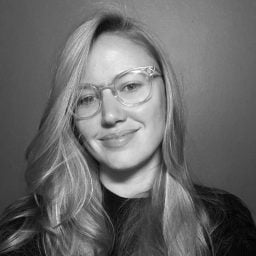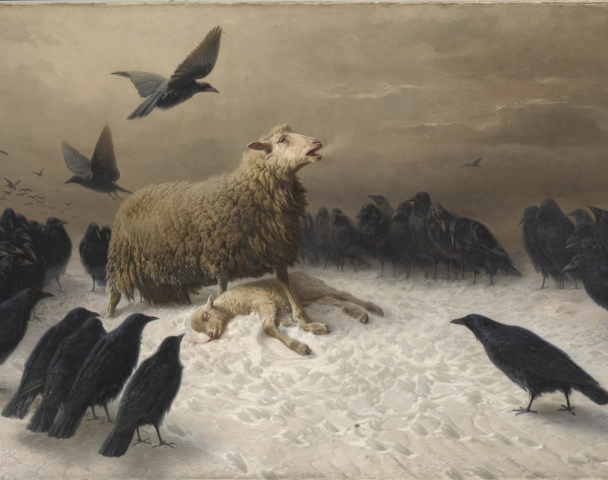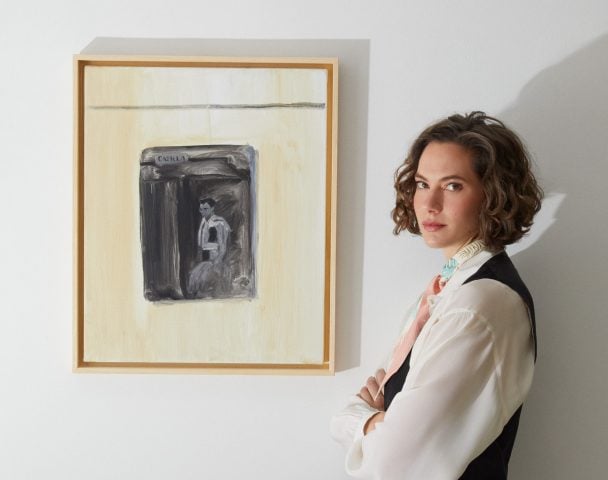Artists
From Venetian Fruit Stands to the Tokyo Underground with Yuko Mohri
In this edition of 'Source Material,' the Japanese artist takes us on an intimate tour behind her national pavilion at the Venice Biennale.
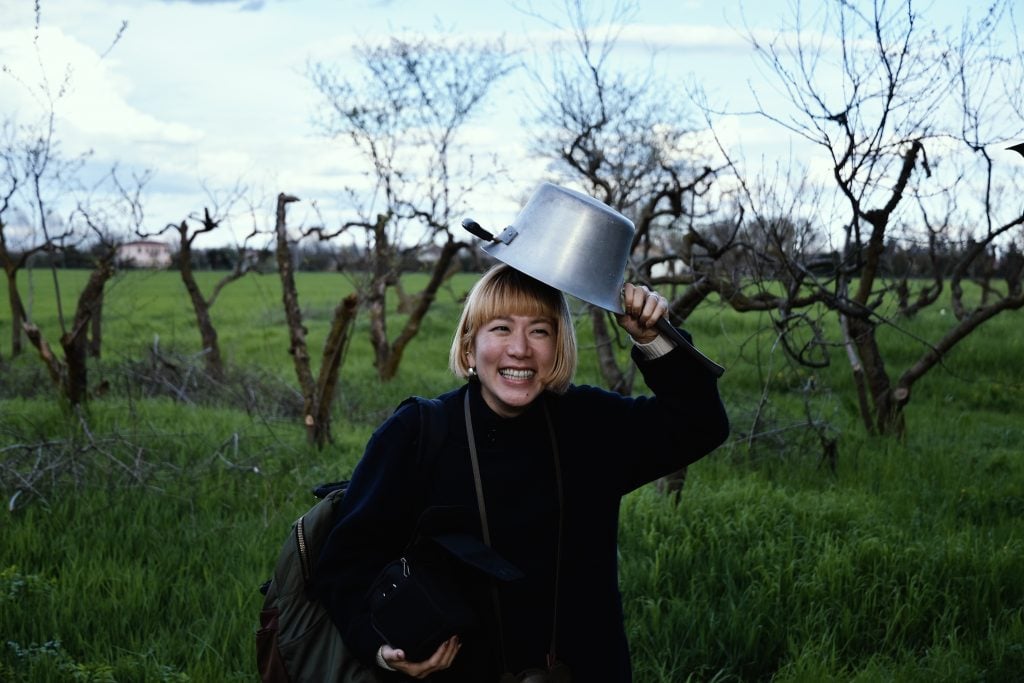
It can be difficult to stand out at the Venice Biennale, amongst a mass of national pavilions, the sprawling main exhibition, and external shows. This year, the Japan Pavilion created a buzz from its opening day, featuring piles of rotting fruit in a playful kinetic sculpture imagined by artist Yuko Mohri and curator Sook-Kyung Lee. Mohri is no stranger to unconventional materials. In 2009, she started to photograph ad hoc techniques for stopping leaks on Japan subways, which often employ household or everyday materials such as plastic bottles and umbrellas.
For the exhibition ‘Compose’ at the Japan Pavilion, the artist inserted electrodes into decaying fruits, converting their moisture into electric currents. The resulting pavilion is an experimental and ever-changing environment of light, sound, and smell, as the fruits decompose. The installation speaks not just to the Japan subway workers’ resourcefulness, but also reflects on the “leaking” water that threatens to submerge Venice and broader global crises caused by climate change. In the face of these apparently insurmountable struggles, her practice is an invitation to work collaboratively and creatively together. Here, she discusses sourcing fruit in Venice, researching composting techniques, and finding inspiration in Italian gardens.
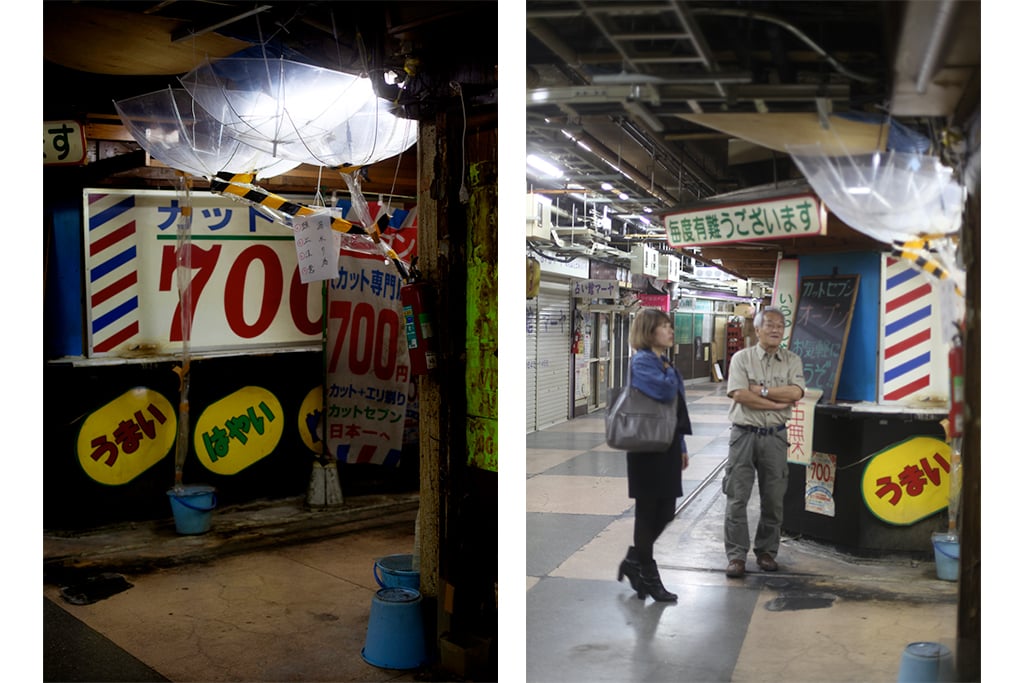
Left: Photo by Yuko Mohri, Right: Photo by Yui Yoshizumi
In 2009, I began photographing water leaks in various subway stations in Tokyo, using everyday objects such as plastic bottles, umbrellas, and hoses to temporarily fix the leaks. The causes of water leakage are various, such as crustal movement from earthquakes, recent major construction for the Tokyo Olympics, and the amount of water in the ground. Sometimes, I invited workshop participants to visit my favorite leaky spots and interviewed staff and cleaners who were doing the work. (Tokyo Metro wasn’t keen to officially speak about it because of the negative connotation of water leaks in general.) This field research, conducted over several years, led to my work Moré Moré (Leaky) currently on view at the Japan Pavilion.
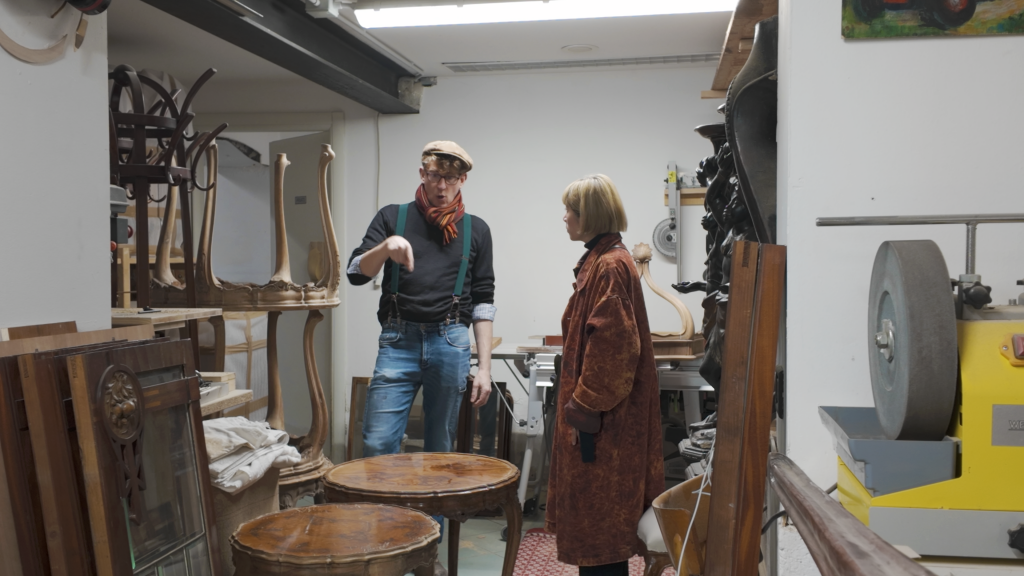
Photo by Koshiro Shikine.
For ‘Compose,’ I decided not to transport the works all the way from Japan but to gather materials in the Venice area, considering the cost and environmental burden involved. Since last summer, I have been asking around and contacting stores that might be able to provide us with some of the materials. Rolando, the furniture dealer, acquires used furniture from old hotels in Venice, restores them beautifully, and resells them in his store in Berlin. By chance when I was on my way back from a restaurant a short distance from the Arsenale, I found a pile of furniture on display in the window. Such research and encounters with disused furniture has led me to learn more about the lives of people living in Venice.
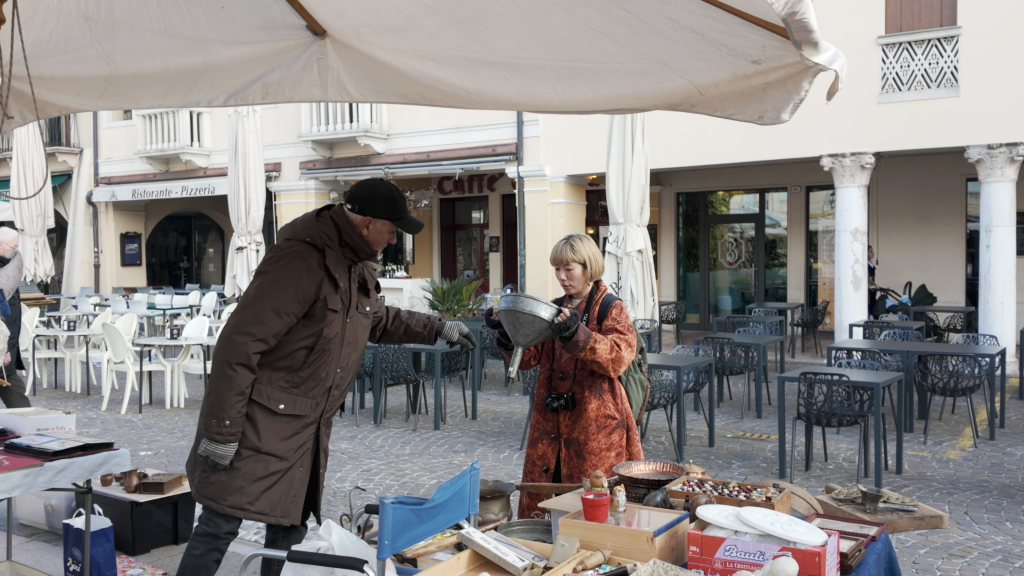
Photo by Koshiro Shikine.
Many of the antique stores in Venice seemed rather expensive, so on weekends I would take the train or car to flea markets or charity stores nearby towns. I was so happy when I got a good piece but I often forgot that everything had to be transported to the Japan Pavilion! I had to juggle between car and boat, and there were many manpower calculations. One of my favorite glass vessels broke while being transported by boat, and Alex, who helped me with the research, was very apologetic.
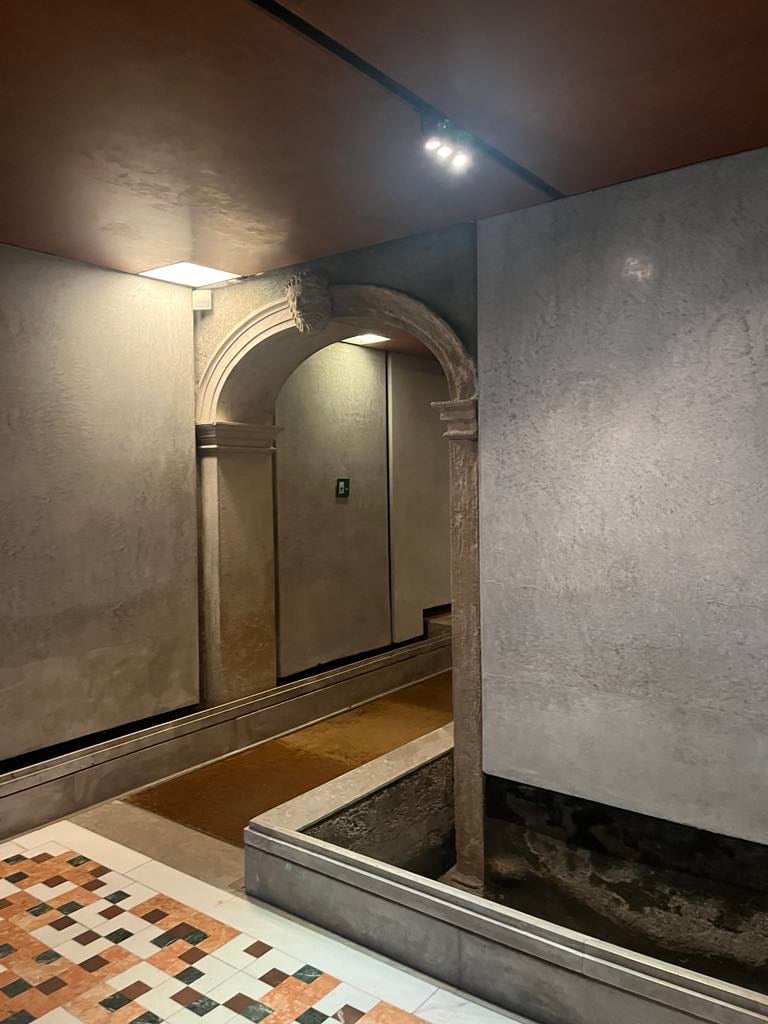
Photo by Koshiro Shikine.
The theme of water is central to my work in Venice. My friend David took me to a garden at Fondanzione Querini Stampalia, which is designed by Carlo Scarpa. The ground floor has an indoor waterway, but on the day we visited, the water had completely receded. On other day, the water level of the sea rose and the Piazza San Marco was flooded. A bridge somewhat like a Japanese Noh stage was quickly built with pipes for people to cross. It is as if the water is breathing, permeating and receding into the city. The close presence of water reveals how many pumps, pipes, and various other ideas are used to try and control it. For me, the power of creativity lies in these moments.
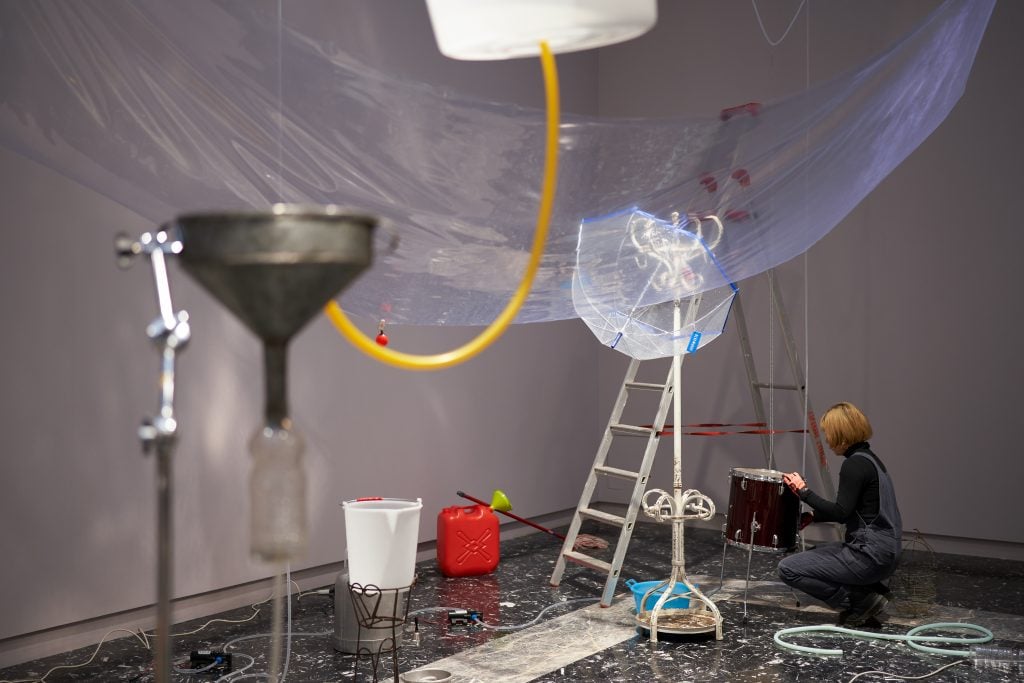
Photo by kugeyasuhide.
For my preparation for the Venice Biennale, I turned the Japan Pavilion into my studio, bringing in everyday objects and furniture that I had locally sourced. I was thinking about how I could collaborate with the unique architecture of the Japan Pavilion, which has holes in the ceiling and floor. It was cold winter in January and February with the door and those holes wide open. My hands were so numb that it was difficult to tie the strings.
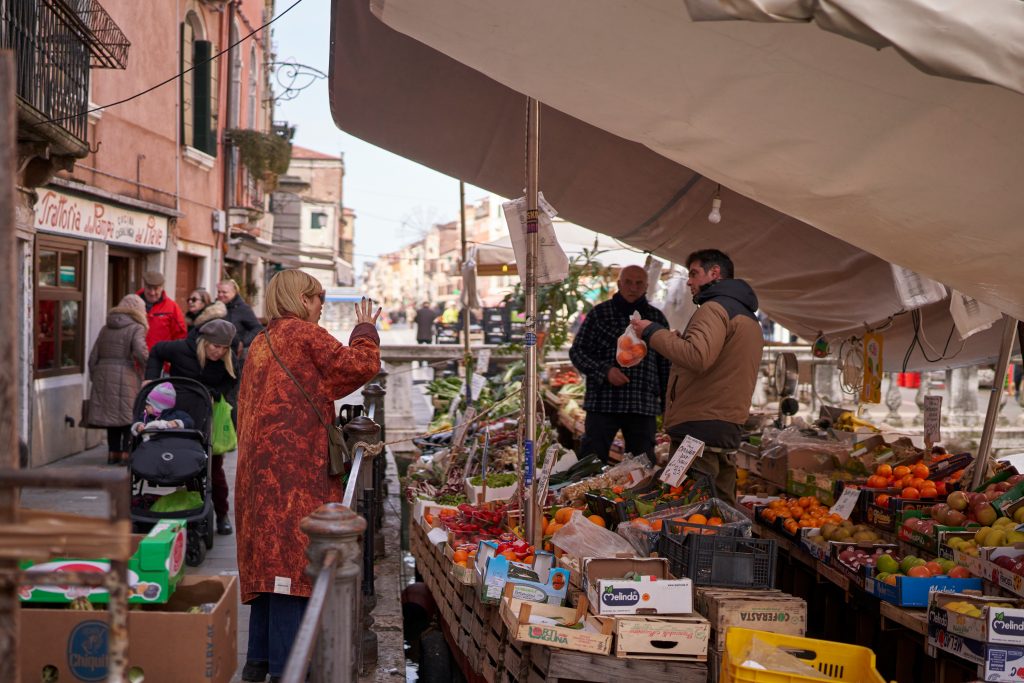
Photo by kugeyasuhide.
On display in the Japan Pavilion is a work titled Decomposition. This piece uses fruit, which decomposes over time, and the work continues to change with the instability of moisture content within it. While shopping at a greengrocer near the Giardini, I asked him what month the fruit would start to rot, and he told me it would be June through September. But the fruit begins to rot quickly. I tried to negotiate with him to give me some of the unsellable fruit.
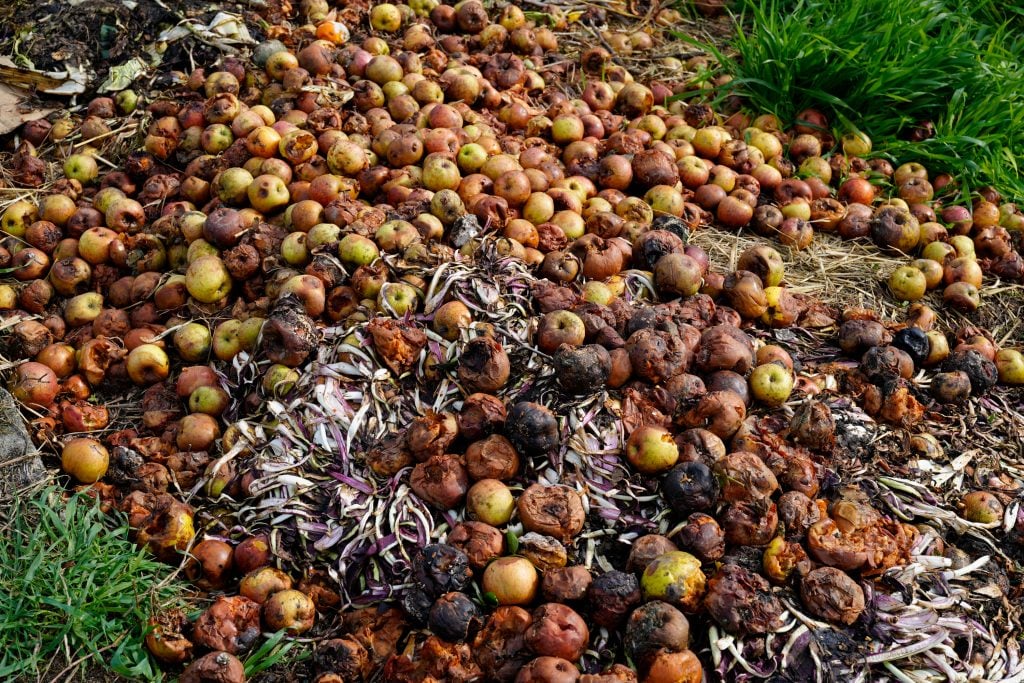
Photo by Yuko Mohri.
I also did some research on fruit composting. The apple and radicchio compost in part of Marisa’s field was fermenting and smelling good. Then I talked to Marco Tosato, an agronomist at the Giardini, about composting, and he told me that he, too, was planning to build a new composting facility behind the Hungarian Pavilion. If this were to be realized at the end of the exhibition period, I would bring in the compost, which is currently set up in the Japan Pavilion, to store the fruit used in the work all through the coming seasons. I see the fruit procured in Venice becoming part of the work and then returning to the soil of the Giardini as a circulation system similarly presented using water in another work Moré Moré (Leaky).
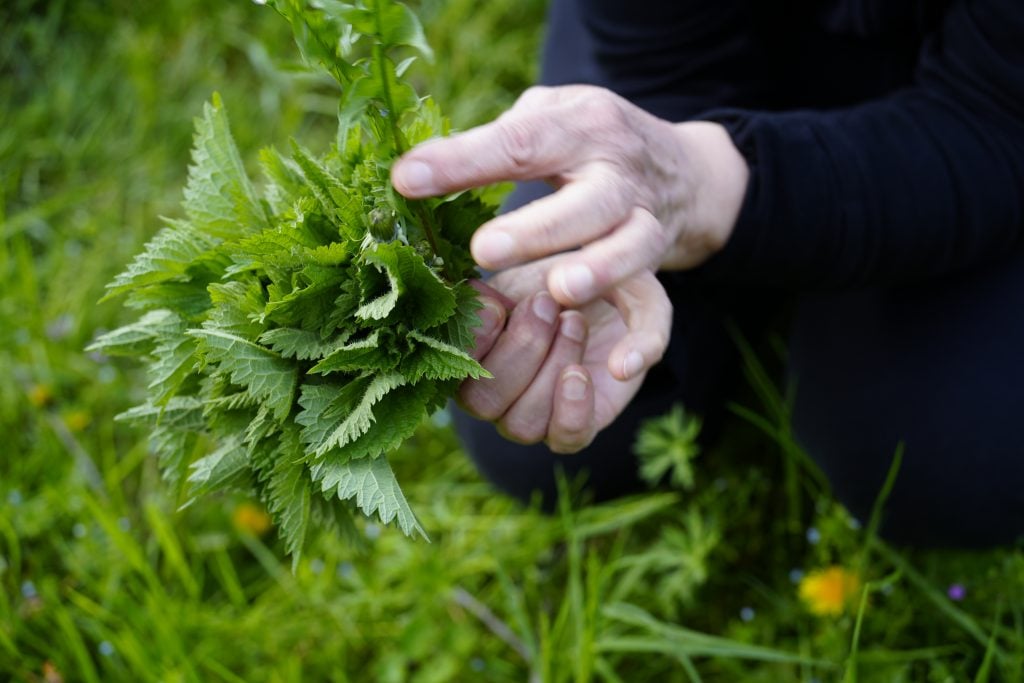
Photo by Yuko Mohri.
When I visited Marisa for my research, she pinched some wildflowers and treated me with a tasteful risotto. These leaves were so prickly I couldn’t hold them with my bare hands. The encounter with Marisa was more than an inspirational source to my work and exhibition. Apple juice and dried apple chips made from organic apples grown by her were served at the opening reception, allowing guests and visitors to the Japan Pavilion to feel the experience that I had in Venice as well.
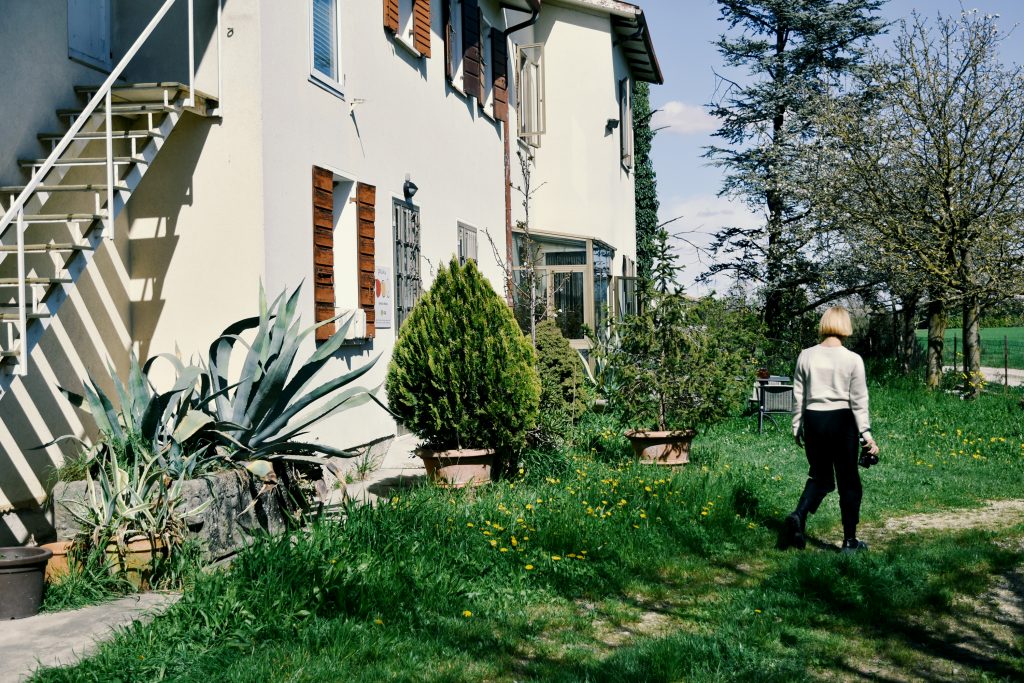
“A visit to the home of Marisa, an organic apple farmer in Treviso, in the summer of 2023. It all started when I went to visit the farmers around Venice to look for inspiration for my work. I wanted to learn how the climate and environment in northern Italy affect agriculture.” Photo by Koshiro Shikine.
In our series Source Material, artists share their creative journeys beyond the confines of the studio. From hunting down frescos in Florence to chasing storms in Cornwall, we explore the eclectic sources of inspiration that fuel artists’ imagination.

